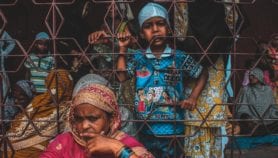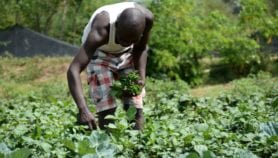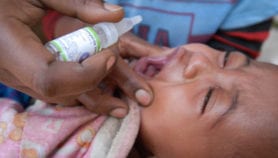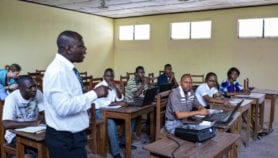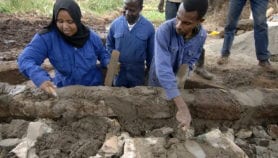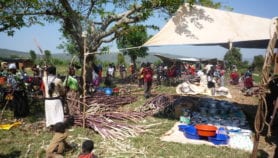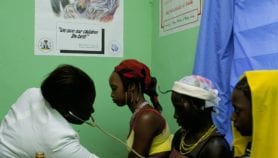By: James Njoroge
Send to a friend
The details you provide on this page will not be used to send unsolicited email, and will not be sold to a 3rd party. See privacy policy.
Kenya aims to become an industrialised nation by 2020. Yet it invests only 0.1 per cent of its gross domestic product in research and development.
This low investment has hindered human resource development, a key component in tackling underdevelopment. It has also made it difficult for schools, colleges, universities, polytechnics, and research centres to produce the researchers that the country needs.
At a personal level, this lack of resources is reflected in the difficulties faced by young scientists in securing both the resources and opportunities needed to become qualified researchers, and thus help the country meet its social and economic goals.
| Some, however, particularly those able to secure funding from external sources, are lucky. Githinji Thiong’o, for example, a 28-year-old masters student in plant pathology at the University of Nairobi, Kenya, has had a smooth ride in his studies. Now in his final year of a two-year course, Thiong’o has already completed his course work, and in the next two months he will spend about US$10,250 in a study on molecular characterisation of the pathogen Rhizoctonia solani, which causes root rot in beans. |
 |
Thiong’o will carry out this research at the US$80-million molecular biology laboratory in Machakos, 50 kilometres east of Nairobi. The laboratory is administered by the Kenya Agricultural Research Institute, with core funding from Biotechnology Trust Africa, a foundation financed by the Dutch government.
His research expenses will be paid by Rockefeller Foundation, which has also been paying his tuition fees (US$2,628 for the year) and covering his personal expenses (about US$3,000).
 | In contrast, at the university’s Upper Kabete campus, another student, Maina Wagacha, struggles to complete his project on the use of antibiotics to control bean rust. Wagacha says that he needs more than US$5,000 to complete his research project, mainly to buy chemicals and cover transport costs. But he has run out of money. “The University of Nairobi advanced me a paltry US$230 as a research allowance, for the whole course,” he says. |
This is the average grant that the five Kenya public universities — Nairobi, Kenyatta, Jomo Kenyatta University of Agriculture and Technology, Moi and Egerton — offer their students.
Wagacha says that he is only able to carry on his research because he is working for a lecturer who is conducting a similar project, and who can therefore provide him with funding. “Otherwise I would have had to drop my studies,” he says. “Two of my colleagues have dropped out of their course due to lack of adequate funding.”
Views differ on who is to blame for this situation. Evan Mathenge, a PhD student in medical entomology in malaria vector control at the Nairobi-based International Centre for Insect Physiology, criticises university professors for not being more aggressive in their search for research funds.
He points out that most university departments in developing countries do little to encourage lecturers to apply for research funding, making it impossible for postdoctoral fellows to carry out research. In Africa, for example, lecturers can keep their university positions for many years without raising any research funds.
As a result, argues Mathenge, students keen to obtain research training have to seek posts in either national or international research institutes. “This has the drawback that you have to fit in with your host’s area of specialisation,” he says. “For example, a parasitologist may end up doing a project in biochemistry or etymology if this is what the host institution specialises in.”
Mathenge proposes that university faculties be transformed to centres of research with sufficient funding, raised by individual lecturers, to avoid research students having to jump from one external research body to another in search of an internship.
The financial security in international laboratories may be better than in universities. But there are drawbacks, says Mathenge. For example, there is no sense of belonging to the research institution, especially if you are a local scientist.
“You only belong there as long as there is money for your project. All local scientists are on contract. At the end of their project, they are supposed to leave.”
There are some signs that the situation in universities is improving. Kenyatta University in Nairobi, for example, one of the top institutions of higher learning in the country, has recently issued an internal memo warning lecturers that they will only keep their jobs if they are successful in raising research funds.
However, many argue that attempts by individual universities to improve their effectiveness are undermined by the impact on science and technology of structural adjustment programmes sponsored by the World Bank and the International Monetary Fund.
Under these programmes, government funding to universities and research institutions has been cut drastically, making it a major challenge to these institutions to equip their laboratories and pay their staff adequately.
Many research students claim that this has led lecturers to concentrate on theoretical rather than practical aspects of science. “Teaching what is already known enhances a good scientific background for young scientists,” says Jane Kemori, a masters student in biochemistry at the University of Nairobi’s Chiromo campus. “But the research equipment is old and is not in tune with the challenges of modern science.”
Moses Kiburi, who has just completed a four-year bachelors degree in crop protection, says that he cannot remember the last time he was in a laboratory. “Even demonstrations were impossible, as there were one hundred of us in the classroom,” he recalls.
Kiburi adds that on the few occasions that the students were able to carry out experiments, they had to make do with obsolete equipment. “The spectrometer available was inaccurate, and only helped those who already knew a bit about how it worked,” he says.
Another difficulty faced by many research students is the lack of access to relevant and timely scientific information.
A visit to Kenyatta University and the University of Nairobi libraries reveals that the latest science journals are hard to find, and few research institutes and universities in Africa can afford to stock leading international scientific journals such as The Lancet, Nature or Science. Kenyatta University’s department of environmental science, for example, stopped subscribing to Nature and Science back in 1992.
“Universities must participate more actively in gathering current issues of scientific journals,” says Wagacha. “Yes, there are scientific journals in the universities. But they are old, the most recent one having been published in 1994.”
Research students in Kenya also suffer from a lack of contact with other scientists, a problem made worse by the absence of any easily accessible database of the country’s scientific efforts, or any inventory of the country’s scientists.
Mathenge suggests that setting up such databases — which exist in a few individual institutions, such as the Kenya Agricultural Research Institute — would be a great help.
“Unfortunately scientists in Kenya only meet in international conferences. There is no mechanism here for scientists to interact and exchange ideas,” complains David Masilu, a researcher in epidemiology at the Kenya Medical Research Institute.
On top of all this is the fact that national research institutes and universities cannot afford to offer attractive salaries for research staff. Indeed in Kenya, as in Africa generally, low pay and poor working conditions and terms of service are widely blamed for the ‘brain drain’ that continues to sap the continent’s resources.
“When a young scientist presents a paper at an international
Kinuthia works with the ministry of agriculture and describes her pay as “miserable”. A recent graduate such as Kinuthia receives gross pay of US$192 a month. |
 |
Finally, many young researchers have to contend with a technology gap that separates them from senior researchers. “Many old scientists are reluctant to embrace new technology, such as the use of computers in laboratory work,” says Mathenge.
He cites the case of an elderly professor, who says he would be comfortable identifying a species just by its morphology. “A newly graduated scientist will opt for DNA technology, which is more precise and fulfils the same purpose. In such cases, the technological gap means that there will always be conflict between the supervisor and the upcoming scientist.”
African countries have invested in educating inquiring and innovative minds. But unless governments now engage these minds in productive activities, many are warning that the brain drain will only get worse.
Related external links:
Biotechnology Trust Africa
International Centre for Insect Physiology
Kenya Agricultural Research Institute
Kenya Medical Research Institute
Kenyatta University
University of Nairobi
Photo credit: James Njoroge
More on Migration
News
African science initiative, RISE, likely to expand
[KAMPALA] An initiative to train science lecturers and boost collaboration among researchers at Afric ...03/09/12



